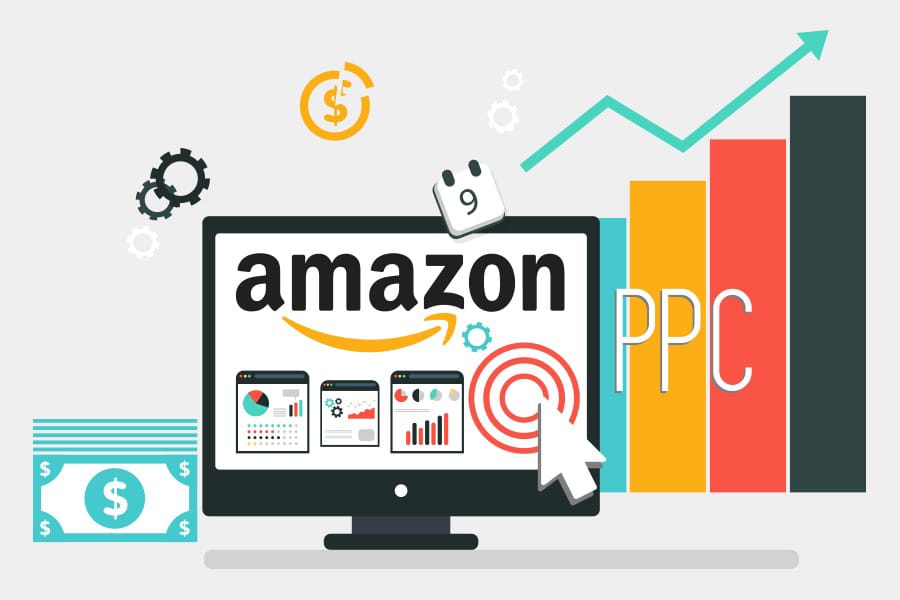Key Metrics for Campaign Success
More than simply smart bidding and creative ad wording are required for your PPC (Pay-Per-Click) campaigns to be successful in the highly competitive environment of Amazon’s e-commerce marketplace. It necessitates a thorough comprehension of the data your initiatives produce. We will examine the capabilities of Amazon PPC analytics in this blog article, emphasizing important metrics that are crucial for determining the effectiveness of campaigns. Equipped with these decisions, sellers can enhance and optimize their approaches to get optimal outcomes.
1. Click-Through Rate (CTR): The Gateway to Engagement
A key indicator that shows the percentage of users that clicked on your advertisement after seeing it is the click-through rate or CTR. A low CTR can indicate that the creative, targeting, or relevancy of your ad needs to be adjusted, whereas a high CTR shows that your ad is connecting with your target demographic. To determine how effective your ad campaigns are overall, track your CTR regularly.
2. Conversion Rate: Conversions from Clicks
The percentage of clicks that result in real purchases is measured by the conversion rate. Although a high CTR is important, the success of your campaigns is ultimately determined by the conversion rate. By identifying high-performing keywords and items, an analysis of this statistic aids in making strategic decisions about budget allocation and bid changes.
3. Advertising Cost of Sale (ACoS): Balancing Costs and Revenue
One important indicator of the effectiveness of your advertising expenditure is the Advertising Cost of Sale (ACoS). It shows the proportion of money spent on advertising to money earned. While a higher ACoS can suggest that optimization is necessary, a lower ACoS suggests a more effective campaign. Ensuring a profitable return on investment requires finding the ideal balance between revenue and ACoS.
4. Impressions: Gauging Visibility
Impressions indicate how many times your advertisement is shown. High impressions imply greater visibility, but success is not a given. Examine the correlation between impressions and CTR to determine the appropriateness and appeal of your advertisements. If your CTR is low yet your impression count is high, you might need to improve your advertisement.
5. Average Cost Per Click (CPC): Managing Budgets Effectively
The average price spent for each click on your advertisement is indicated by the term “cost per click” (CPC). For bid revisions and budget management, CPC monitoring is essential. Increasing CPC might mean making calculated adjustments to keep your ad spend within budget and in line with your campaign objectives.
6. Search Term Report: Discovering Keyword Performance
Explore the Search Term Report to learn more about the actual search terms that brought up your advertisements. This report is an invaluable resource for pinpointing high-converting keywords, improving low-converting phrases, and customizing your approach according to actual user behavior. Make the most of these insights to improve the efficiency and relevancy of your keyword targeting.
7. Return on Ad Spend (ROAS): Measuring Profitability
The amount of revenue made for each dollar spent on advertising is measured by the return on ad spend, or ROAS. For instance, if your ROAS is 5, you made $5 for every $1 you spent. To achieve maximum profitability, set target ROAS goals that align with your business objectives and make ongoing adjustments to your plan.
8. Attributed Sales: Linking Conversions to Ads
The entire sales that resulted from your advertising activities are called attributed sales. Determining the overall effect of your campaigns on revenue generation requires an understanding of the relationship between ad expenditure and attributed sales. Examine this indicator to determine which goods are performing well and adjust your budget accordingly.
Mastering Amazon PPC Analytics for Sustainable Success
The goal of Amazon PPC analytics is to derive actionable insights that facilitate well-informed decision-making, not just numbers. Sellers can find optimization possibilities, improve targeting tactics, and ultimately boost campaign performance by routinely tracking and analyzing important indicators. Understanding the potential of Amazon PPC analytics is a strategic necessity for anyone hoping to succeed in the fast-paced world of online retail as the e-commerce landscape continues to change. Equipped with these insights, sellers may adeptly maneuver through the complexities of pay-per-click advertising, guaranteeing that their campaigns not only garner attention but also effectively translate clicks into genuine business gains.




